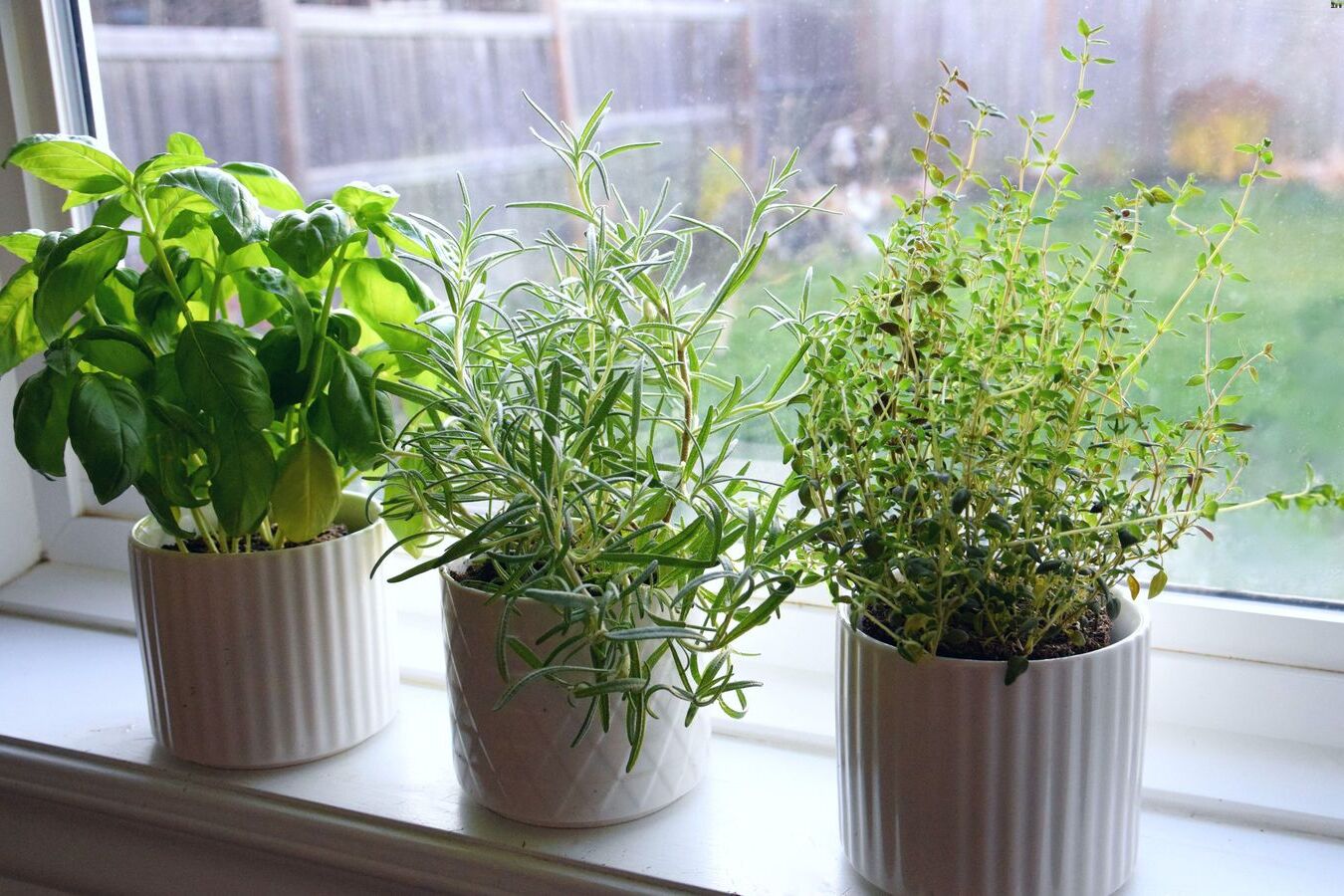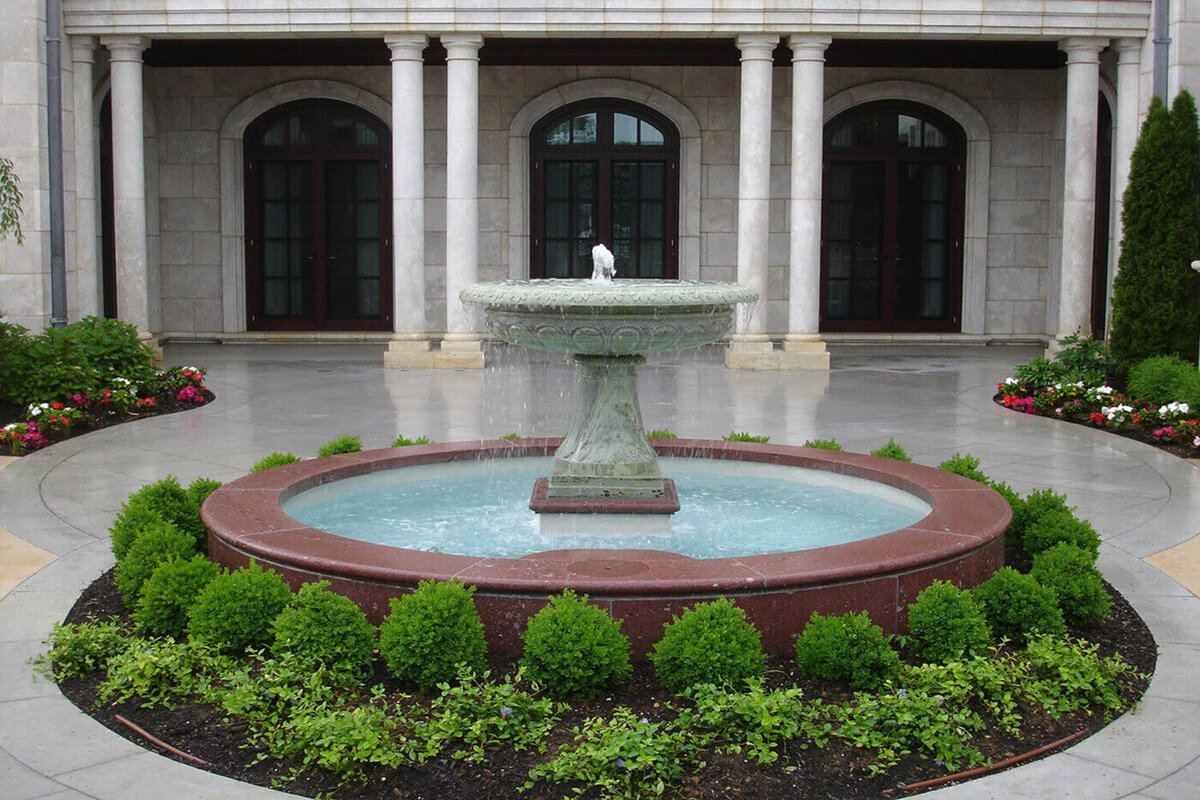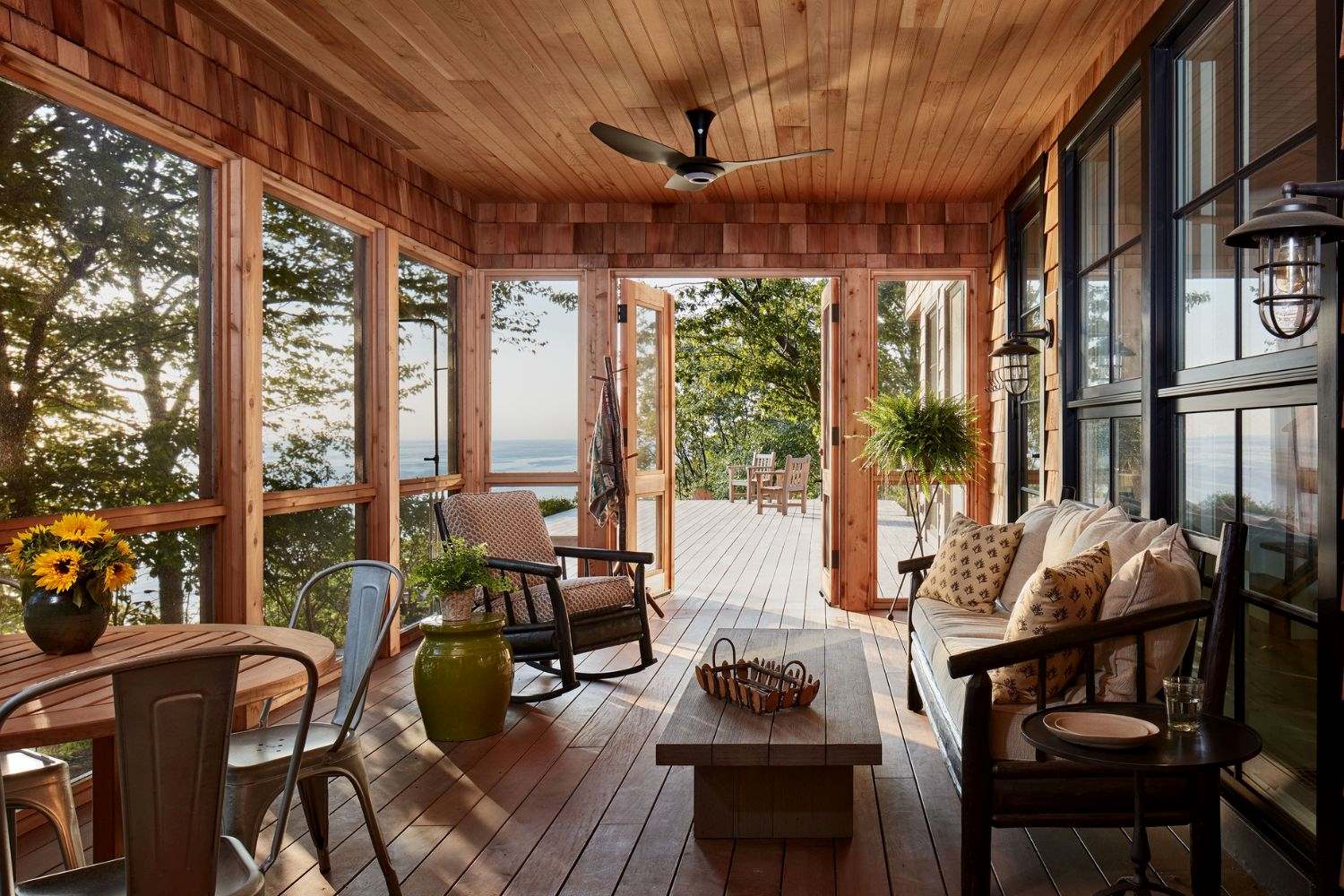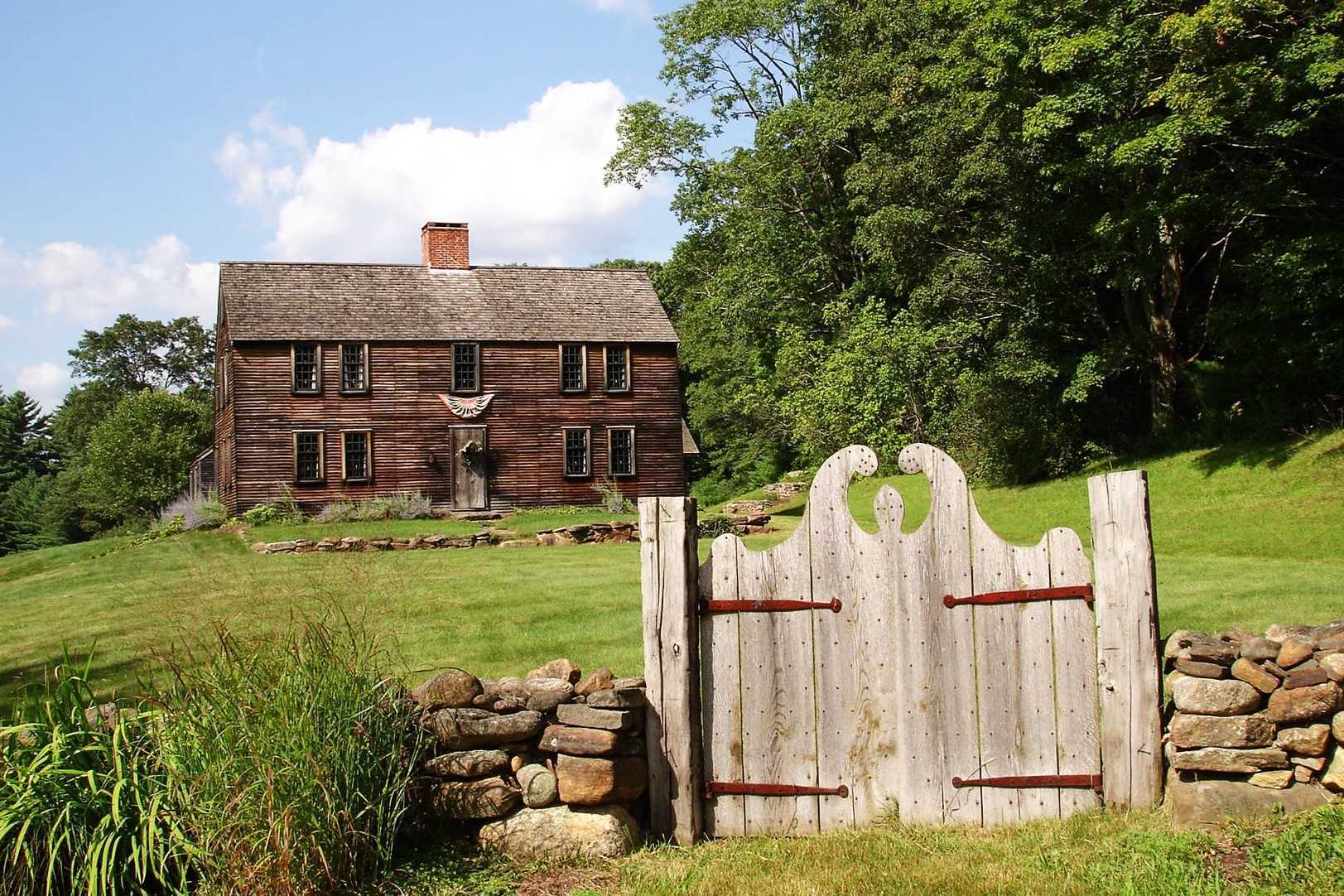Home>Storage Ideas>Kitchen Storage>Tour The Bountiful Kitchen Garden At Brent Eleigh Hall In Suffolk


Kitchen Storage
Tour The Bountiful Kitchen Garden At Brent Eleigh Hall In Suffolk
Modified: October 30, 2024
Discover the abundant kitchen garden at Brent Eleigh Hall in Suffolk, overflowing with inspiration for kitchen storage ideas. Explore the flourishing crops and innovative strategies to optimize your culinary space.
(Many of the links in this article redirect to a specific reviewed product. Your purchase of these products through affiliate links helps to generate commission for Storables.com, at no extra cost. Learn more)
Introduction
Welcome to the bountiful kitchen garden at Brent Eleigh Hall in Suffolk! Nestled in the picturesque countryside, this renowned estate boasts a rich history and a thriving kitchen garden that will inspire all green thumbs and culinary enthusiasts.
With its roots dating back to the 17th century, Brent Eleigh Hall holds a special place in the hearts of locals and visitors alike. Once a grand manor house, the estate has evolved over the years, embracing sustainability and a deep appreciation for the land it sits on. The kitchen garden, in particular, is a testament to the estate’s commitment to organic practices and the joy of growing your own food.
Spanning across several acres, the kitchen garden at Brent Eleigh Hall is a sight to behold. It is meticulously designed and maintained, offering a wide array of fruits, vegetables, herbs, and flowers. The garden serves as a source of inspiration for home cooks, chefs, and anyone who enjoys the pleasures of fresh, organic produce.
Step inside the garden, and you’ll be greeted by a symphony of colors, scents, and textures. The neatly organized beds and pathways guide visitors on a journey of exploration and discovery. Whether you’re an experienced gardener or just starting out, there’s something here for everyone to enjoy.
Imagine ripe tomatoes, plump berries, fragrant herbs, and vibrant, leafy greens. The kitchen garden at Brent Eleigh Hall is an oasis of flavor and nutrition. It provides a sensory experience like no other, with every turn revealing a new delight for the senses.
But the garden is not just a feast for the eyes and taste buds – it also serves as an ecosystem for beneficial insects, birds, and wildlife. This commitment to biodiversity is showcased through carefully planned companion planting, natural pest control methods, and the use of organic fertilizers.
So, join us as we take a tour of the kitchen garden at Brent Eleigh Hall. Get ready to be inspired, learn some tips and tricks, and discover the joy of growing your own food. Whether you have a small balcony or a sprawling backyard, there’s always room for a little piece of the Brent Eleigh Hall kitchen garden in your own home. Let’s dig in!
Key Takeaways:
- Immerse yourself in the bountiful kitchen garden at Brent Eleigh Hall, where meticulous design, organic practices, and a commitment to sustainability create a vibrant oasis for growing fresh, flavorful produce.
- Experience the rich history and enduring legacy of Brent Eleigh Hall, where centuries of dedication to horticultural excellence have shaped a thriving kitchen garden that inspires and delights visitors of all levels of gardening expertise.
History of Brent Eleigh Hall
Brent Eleigh Hall, located in the picturesque village of Brent Eleigh in Suffolk, has a rich and fascinating history that dates back centuries. Originally built in the 17th century, the hall has seen numerous owners and transformations over the years.
The earliest recorded owner of Brent Eleigh Hall was the Waldegrave family, who owned the estate in the 1600s. They eventually sold the property to Sir Thomas Gery Cullum, a prominent politician and landowner, in the early 18th century.
During Sir Thomas Gery Cullum’s ownership, Brent Eleigh Hall underwent significant renovations and expansions. The hall was transformed into a grand manor house, with beautiful gardens and ornate interiors. The Cullum family maintained ownership of the estate for several generations before it passed into the hands of the Smith family in the 19th century.
Under the Smith family’s stewardship, Brent Eleigh Hall continued to flourish. The gardens were expanded and became renowned for their beauty and productivity. The Smiths were avid gardeners and took great pride in the estate’s horticultural excellence. The kitchen garden in particular became a focal point of their efforts, providing an abundance of fresh produce to the household.
In the early 20th century, Brent Eleigh Hall changed hands once again, this time being acquired by a local businessman with a passion for horticulture. He invested heavily in the estate, upgrading the infrastructure and further expanding the gardens. The kitchen garden was given special attention, with additional beds and greenhouses added to enhance productivity.
Today, Brent Eleigh Hall is still privately owned and has become a beloved destination for garden enthusiasts and history buffs alike. It remains a testament to the dedication and vision of its past owners, who have worked tirelessly to preserve its beauty and legacy.
The remarkable history of Brent Eleigh Hall is not only a testament to the passion of its owners but also a reflection of the importance of gardens in British culture. From its humble beginnings as a country estate to its present-day incarnation as a thriving kitchen garden, Brent Eleigh Hall stands as a beacon of inspiration for gardeners and history enthusiasts alike.
Visitors to Brent Eleigh Hall can take a step back in time as they explore the grounds and admire the centuries-old architecture. The history of the hall is woven into every nook and cranny, making it a truly immersive and educational experience.
As we embark on our journey through the kitchen garden at Brent Eleigh Hall, we invite you to appreciate the rich history of this remarkable estate and the enduring legacy of its passionate gardeners.
Overview of the Kitchen Garden
The kitchen garden at Brent Eleigh Hall is a feast for the senses and a testament to the beauty and productivity of organic gardening. It is spread across several acres, carefully designed to maximize efficiency and yield. This thriving oasis brings together a wide variety of plants, providing a diverse range of fruits, vegetables, and herbs.
The garden is divided into different sections, each serving a specific purpose and featuring its own unique collection of plants. As you walk through the pathways, you’ll be greeted by an array of colors, shapes, and aromas, creating a truly immersive experience.
The vegetable beds form the heart of the kitchen garden. Here, you’ll find rows upon rows of leafy greens, juicy tomatoes, vibrant peppers, and an assortment of root vegetables. The beds are meticulously planned and rotated to ensure optimal soil health and prevent disease. Raised beds with well-drained soil provide the perfect growing conditions for vegetables, resulting in robust and flavorful harvests.
Adjacent to the vegetable beds, you’ll find a captivating collection of fruit trees and berry bushes. These include apple, pear, plum, and cherry trees, as well as blackberries, raspberries, and strawberries. The fruit trees are trained and pruned to maximize output while maintaining a compact form. The bushes are carefully trellised and netted, protecting the delicious fruit from pests and ensuring a bountiful harvest.
A dedicated herb garden adds another layer of flavor and aroma to the kitchen garden. Here, an assortment of culinary herbs such as basil, thyme, rosemary, and parsley flourish. The fragrant herbs offer endless possibilities for enhancing the taste of dishes, providing a fresh and aromatic touch to every meal.
For extending the growing season and starting plants early, a greenhouse and cold frames are integral parts of the kitchen garden. The greenhouse creates a controlled environment, allowing delicate seedlings and tender plants to thrive before being transplanted into the garden beds. Cold frames provide protection and warmth during cooler months, offering a place for cold-hardy crops like lettuces and spinach to thrive.
Managing waste and nourishing the soil is a crucial aspect of the kitchen garden. A dedicated composting area allows for the recycling of kitchen scraps, garden waste, and fallen leaves. This compost is then added back into the garden beds, enriching the soil with essential nutrients and promoting healthy plant growth.
Throughout the kitchen garden, thoughtful design elements are incorporated to enhance aesthetics and functionality. Paved pathways guide visitors through the garden, making it easy to navigate and explore. Decorative trellises and arbors add vertical interest while providing support for climbing plants. Along the edges, beautiful flowers and beneficial companion plants attract pollinators and add a touch of visual allure.
The kitchen garden at Brent Eleigh Hall is a living, breathing testament to the joys and rewards of organic gardening. It showcases the potential of growing your own food in a sustainable and environmentally friendly manner. Whether you’re a seasoned gardener or a beginner, this exceptional garden invites you to connect with nature, savor the flavors of freshly harvested produce, and be inspired to cultivate your own kitchen oasis.
Vegetable Beds
The vegetable beds in the kitchen garden at Brent Eleigh Hall are the heart and soul of this thriving oasis. Carefully planned and maintained, these beds are designed to maximize productivity and provide a bountiful harvest of fresh, organic vegetables.
As you wander through the vegetable beds, you’ll be greeted by a symphony of colors and flavors. Rows of robust leafy greens, such as lettuce, kale, and Swiss chard, thrive in the nutrient-rich soil. Vibrant tomatoes, juicy peppers, and crisp cucumbers climb trellises, creating a vertical display of edible delights. Nurtured root vegetables like carrots, beets, and radishes await their turn to be plucked from the earth, their vibrant hues offering a visual feast.
The vegetable beds at Brent Eleigh Hall follow a strategic planting method, ensuring optimal use of space and resources. Companion planting is utilized to deter pests and attract beneficial insects. For example, marigolds are interspersed among the vegetable rows to repel harmful nematodes. Fragrant herbs, such as basil and dill, are planted alongside certain vegetables to enhance their flavor and repel pests.
Crop rotation is also practiced in the vegetable beds, preventing the depletion of soil nutrients and reducing the risk of disease. By rotating crops each growing season, the balance of nutrients is maintained, and the buildup of pests and diseases specific to certain vegetables is minimized. This practice promotes healthy soil and helps sustain the long-term productivity of the garden.
Raised beds are a prominent feature in the vegetable section of the kitchen garden. These beds offer several advantages, including improved drainage, better soil aeration, and easier access for planting and harvesting. The raised beds at Brent Eleigh Hall are constructed of a combination of well-balanced soil mixtures, compost, and organic matter, ensuring that the plants have the optimal growing conditions they need to flourish.
To maintain a continuous supply of fresh vegetables throughout the growing season, succession planting is implemented. This technique involves staggering the planting of crops at regular intervals, ensuring a continuous harvest of produce. By following this method, the vegetable beds at Brent Eleigh Hall can yield a steady supply of greens, root vegetables, and other seasonal delights.
Organic practices are at the core of the vegetable bed management in the kitchen garden. Instead of relying on chemical pesticides and fertilizers, natural methods are used to protect the plants and nurture the soil. This includes implementing crop rotation, using companion planting, and incorporating organic compost and mulch to provide essential nutrients and improve soil health.
Visitors to the vegetable beds at Brent Eleigh Hall are not only treated to a visual delight but can also gain valuable insights into organic gardening techniques. The beautiful layout and successful cultivation of various vegetables showcase the possibilities and rewards of growing your own food. It’s an inspiring reminder that with a little care, dedication, and the right techniques, anyone can create a flourishing vegetable garden filled with the flavors of nature’s bounty.
Fruit Trees and Berry Bushes
The kitchen garden at Brent Eleigh Hall is not just a haven for vegetables and herbs but also boasts a remarkable collection of fruit trees and berry bushes. These delightful additions provide a luscious array of fresh, seasonal fruits that add an extra level of flavor and variety to the garden.
As you explore the fruit tree section of the garden, you’ll be greeted by the sight of gracefully branched apple, pear, plum, and cherry trees. These majestic trees are carefully pruned to maintain their health and shape while maximizing fruit production. With each passing season, the trees bear a cornucopia of succulent fruits, ready to be plucked and savored.
The assortment of fruit trees at Brent Eleigh Hall is meticulously curated to ensure a succession of flavors throughout the year. Early-season varieties like the crisp, tart Granny Smith apples are soon followed by the sweet and juicy Red Haven peaches. As the seasons progress, you’ll witness the emergence of succulent Red Bartlett pears and the unforgettable taste of exotic plum varieties.
Berry lovers will find themselves in heaven amidst the berry bushes that dot the landscape of the kitchen garden. Raspberry canes stretch forth, bursting with plump, ruby-red berries ready for picking. Blackberry bushes offer a treasure trove of juicy, black delights that tantalize the taste buds. And let’s not forget the strawberries – these small but mighty fruits grow in abundance, their fragrant aroma inviting eager hands to pluck them from their vines.
To ensure optimal fruit production, the fruit trees at Brent Eleigh Hall receive careful attention and maintenance. Pruning is carried out in winter when the trees are dormant, allowing for the removal of dead or damaged branches and shaping the tree to encourage proper airflow and sunlight penetration. This practice not only improves fruit quality but also reduces the risk of disease and pest infestation.
Similarly, the berry bushes are also pruned to remove old canes and stimulate new growth. Regular pruning encourages better airflow, increases fruit production, and improves the overall health of the plants. Trellises and supports are utilized to provide a structure for the sprawling canes, making harvest easier and enhancing the visual appeal of the berry section.
The fruit trees and berry bushes at Brent Eleigh Hall are cultivated with a strong emphasis on organic practices. Chemical pesticides are eschewed in favor of natural methods to control pests and diseases. Beneficial insects, like ladybugs and praying mantises, are encouraged to thrive and help keep harmful pests in check. Organic fertilizers and compost are applied to nourish the soil, ensuring the health and vitality of the fruit trees and berry bushes.
With each bite of a sun-ripened apple or a burst of tartness from a raspberry, the fruit trees and berry bushes in the kitchen garden at Brent Eleigh Hall provide a truly delightful experience. Their presence not only adds beauty and diversity to the landscape but also reminds us of the joy and satisfaction that comes from growing and enjoying the fruits of the earth.
When touring the kitchen garden at Brent Eleigh Hall, be sure to take note of the different varieties of fruits, vegetables, and herbs being grown, and ask the gardeners about their favorite tips for successful cultivation in the local climate.
Herb Garden
Nestled within the remarkable kitchen garden at Brent Eleigh Hall is a charming herb garden, bursting with an assortment of aromatic and flavorful herbs. This enchanting corner of the garden offers a treasure trove of culinary possibilities and a chance to experience the delightful scents and tastes that only fresh herbs can provide.
As you step into the herb garden, you’ll be greeted by a symphony of enticing fragrances. Basil, with its distinctively sweet aroma, mingles with the earthy scent of rosemary and the refreshing notes of mint. Thyme, oregano, and sage release their aromatic oils as you brush past, immersing you in a sensory experience that is truly captivating.
The herb garden at Brent Eleigh Hall is meticulously planned and organized, with each herb having its designated spot. Raised beds or containers house the herbs, providing optimal drainage and ensuring easy access for harvesting and maintenance. This thoughtful design allows for maximum productivity and a visually appealing layout.
Since herbs have varying needs and growth habits, companion planting is smartly employed throughout the herb garden. Certain herbs, such as rosemary and lavender, are known for their ability to repel pests, making them ideal companions for more vulnerable herbs like basil and parsley. This natural pest control technique reduces the need for harmful pesticides while promoting a healthier, more balanced ecosystem.
The diverse range of herbs in the garden offers an abundance of culinary possibilities. Basil, with its vibrant green leaves and sweet aroma, is perfect for creating fragrant pesto or infusing oils and vinegar. Thyme adds depth and flavor to roasts and stews, while rosemary elevates the taste of roasted vegetables and grilled meats. Fresh mint leaves can be used to craft refreshing beverages, garnish desserts, or add a zing to salads.
Beyond their culinary uses, herbs also have medicinal and therapeutic properties. Lavender, with its calming scent, can be used to create soothing bath infusions or relaxing herbal teas. Chamomile, renowned for its calming effects, can be brewed into a comforting tea that promotes relaxation and sleep. The herb garden at Brent Eleigh Hall provides a wealth of opportunities to explore the vast world of herbal remedies and natural wellness.
In addition to their practical uses, herbs also add beauty and visual appeal to the kitchen garden. The vibrant colors, textures, and different growth habits of the herbs create an aesthetically pleasing mosaic of foliage. Tall and statuesque fennel provides vertical interest, while delicate cilantro adds a touch of whimsy. The herb garden invites visitors to take a leisurely stroll, admiring the diverse forms and textures of these enchanting plants.
The herb garden at Brent Eleigh Hall exemplifies the extraordinary potential of herbs and their multifaceted roles in the kitchen and beyond. From adding depth of flavor to dishes and enhancing the senses to providing natural remedies and adorning the garden with their beauty, herbs are truly versatile and rewarding plants to cultivate. Take a moment to immerse yourself in the aromatic embrace of the herb garden, and let its vivid aromas and flavors inspire your culinary creations and wellness pursuits.
Greenhouse and Cold Frames
Nestled within the kitchen garden at Brent Eleigh Hall, you’ll find a haven for tender seedlings and a retreat for extending the growing season – the greenhouse and cold frames. These structures play a crucial role in the garden’s success, allowing for the cultivation of a wider variety of plants and ensuring a consistent supply of fresh produce throughout the year.
The greenhouse stands as a sanctuary for delicate seedlings and plants that require a controlled environment to thrive. With its transparent walls and roof, it harnesses the power of sunlight, creating a warm and nurturing space for plants to grow. Within its walls, a symphony of green unfurls, as tiny seedlings reach for the light, and heat-loving crops flourish.
Inside the greenhouse, you’ll find a carefully orchestrated symphony of plants at various stages of development. Here, rows of trays house seedlings awaiting their turn to be planted in the garden beds. Tomatoes stretch their green tendrils, peppers grow into sturdy plants, and delicate herbs gain strength. The greenhouse provides the perfect environment for these tender plants to establish strong root systems and develop into healthy specimens.
The greenhouse at Brent Eleigh Hall is a place of meticulous care and attention. Watering, ventilation, and temperature control are all carefully managed to ensure optimal growing conditions. Automatic watering systems provide a consistent supply of moisture, while adjustable vents allow for proper air circulation. Heat-loving plants thrive in the warm environment, shielded from the vagaries of weather and elements.
Adjacent to the greenhouse, you’ll find the cold frames, another essential element in the kitchen garden’s ecosystem. These low, insulated structures offer protection and warmth during cooler months and provide an ideal environment for cool-season crops to thrive. Lettuces, spinach, and other leafy greens are shielded from frost, allowing for an extended harvest into the colder months.
The cold frames at Brent Eleigh Hall are designed with functionality and efficiency in mind. Their transparent tops allow sunlight to penetrate, while insulated walls provide additional protection from the cold. The frames are situated strategically to maximize sun exposure and are easily accessible for planting, tending, and harvesting. These versatile structures bring an extra layer of versatility to the garden, allowing for an abundant harvest even when temperatures drop.
The greenhouse and cold frames at Brent Eleigh Hall are a testament to the garden’s commitment to sustainability and year-round productivity. These structures enable the gardeners to experiment with a wider range of plants, including those that wouldn’t typically thrive in the local climate. Herbs, tomatoes, peppers, and other heat-loving crops can be nurtured throughout the year, ensuring a constant supply of fresh produce.
In addition to their practical benefits, the greenhouse and cold frames contribute to the overall beauty and charm of the kitchen garden. Their transparent walls allow visitors to peek inside, catching a glimpse of the vibrant greenery and the promise of future harvests. These structures serve as a educational tool, inviting curious minds to discover the magic of extending the growing season and providing an insight into the techniques of protected cultivation.
The greenhouse and cold frames at Brent Eleigh Hall are a testament to the ingenuity and dedication of the gardeners, offering a glimpse into the world of controlled-environment gardening. Whether it’s the excitement of nurturing tender seedlings or harvesting fresh greens in the dead of winter, these structures provide an invaluable resource for the kitchen garden’s success. Step inside the warm embrace of the greenhouse and cold frames, and discover the remarkable possibilities they offer for year-round gardening.
Composting Area
Nestled discreetly within the confines of the kitchen garden at Brent Eleigh Hall is a bustling composting area, where waste turns into precious black gold. This essential component of the garden’s ecosystem demonstrates a commitment to sustainability and nourishing the soil with organic matter.
The composting area is a haven for transforming kitchen scraps, garden waste, and fallen leaves into nutrient-rich compost. It serves as a testament to the garden’s dedication to reducing waste and embracing the principles of circularity and conservation.
A variety of composting methods are employed in the area, ensuring the efficient breakdown of organic materials. Piles of composting materials are carefully layered, blending kitchen scraps with carbon-rich materials such as dried leaves and straw. This layering allows for optimal decomposition, creating an ideal balance of carbon and nitrogen that fosters the growth of beneficial microorganisms.
Regular turning and mixing of the compost piles help aerate the organic matter, speeding up the decomposition process. This process promotes the breakdown of materials and prevents foul odors associated with stagnant composting. The diligent care and attention given to the compost piles result in a rich, dark compost that is teeming with life and nutrients.
The compost produced in the area plays a vital role in maintaining the health and fertility of the soil in the kitchen garden. It is incorporated into the vegetable beds, fruit tree orchards, and herb garden to enrich the soil with essential nutrients. This organic amendment improves soil structure, water retention, and nutrient availability, leading to healthier plants and increased productivity.
In addition to being an invaluable resource for the garden, the composting area reflects a commitment to sustainable gardening practices. It reduces the reliance on synthetic fertilizers and minimizes the amount of organic waste diverted to landfill. By utilizing kitchen scraps and green waste to create compost, Brent Eleigh Hall demonstrates the importance of closing the loop and creating a self-sustaining system within the garden.
The composting area also serves as an educational tool, showcasing the principles and benefits of composting to visitors. It offers an opportunity to learn about the composting process, including the importance of carbon-to-nitrogen ratios, turning the pile for aeration, and the transformative power of microorganisms. It invites visitors to embrace composting as a way to reduce waste and contribute to a greener, more sustainable future.
The composting area at Brent Eleigh Hall not only transforms waste into nutrient-rich compost but also cultivates an understanding of the interconnectedness of organic matter, soil health, and plant growth. It reminds us that even the smallest actions, like composting our kitchen scraps, can have a profound impact on the environment and the productivity of our gardens.
Next time you visit the kitchen garden at Brent Eleigh Hall, take a moment to appreciate the bustling composting area. Witness the transformative power of nature, where waste is turned into a valuable resource, nourishing the soil and fostering the growth of thriving plants. Let it serve as a reminder of the importance of sustainability and the extraordinary potential of compost in creating a healthy, productive garden.
Maintenance and Care of the Kitchen Garden
The kitchen garden at Brent Eleigh Hall is a flourishing oasis that requires dedicated maintenance and care to ensure its continued success. Through diligent attention and thoughtful practices, the garden thrives, providing an abundance of fresh produce and a picturesque landscape for visitors to enjoy.
Regular watering is a fundamental aspect of garden maintenance. The vegetable beds, fruit trees, and herb garden all require consistent and adequate moisture to thrive. Efficient irrigation systems, such as drip irrigation or soaker hoses, are employed to ensure that plants receive the right amount of water directly at their roots, minimizing water waste and promoting healthy plant growth.
Weeding is another crucial part of garden maintenance. Unwanted plants compete with the desired crops for nutrients, water, and sunlight. Regular weeding keeps these invasive plants at bay, allowing the vegetables, fruits, and herbs to flourish without competition. Mulching is often utilized to suppress weed growth, conserve soil moisture, and promote a more visually appealing garden space.
Pruning and shaping of plants play a significant role in maintaining the health and productivity of the garden. Fruit trees are carefully pruned during their dormant season, removing dead or damaged branches and shaping the tree to encourage proper airflow and sunlight penetration. Pruning also helps in reducing the risk of diseases by improving air circulation and providing more sunlight to reach the inner branches and foliage.
Regular harvesting is a delightful and essential task in the kitchen garden. Fruits and vegetables are picked at their peak of ripeness to ensure maximum flavor and nutrient content. Regular harvests not only provide a constant supply of fresh produce but also encourage the plants to continue producing.
To protect the garden from potential pests and diseases, preventive measures are implemented. Companion planting is utilized to naturally repel pests or attract beneficial insects that will keep destructive pests under control. Natural remedies and organic pesticides are favored over chemical interventions, aligning with the garden’s commitment to organic and environmentally friendly practices.
Soil health and fertility are the foundation of a thriving garden, and regular soil care is essential. The addition of compost, organic matter, and mulch helps improve soil structure, nutrient content, and water retention capacity. Soil testing is conducted periodically to assess nutrient levels and pH, allowing for appropriate amendments to be made to create the ideal growing conditions for plants.
The kitchen garden at Brent Eleigh Hall is also tended to with an eye for aesthetics. Thoughtful design elements, such as decorative trellises, arbors, and pathways, enhance the visual appeal of the garden, creating an inviting and enchanting atmosphere.
In addition to the day-to-day maintenance tasks, the gardeners at Brent Eleigh Hall practice long-term planning and crop rotation. By rotating crops each year, the risk of pests and diseases specific to certain plants is minimized, and the fertility of the soil is preserved. Crop rotation ensures a diverse and sustainable garden ecosystem.
Regular observation and monitoring of the garden are part of the caretaker’s routine. This helps identify any signs of pests, diseases, or nutrient deficiencies early on, allowing for prompt intervention and mitigating potential damage.
The kitchen garden at Brent Eleigh Hall stands as a testament to the dedication and meticulous care it receives. Through proper watering, weeding, pruning, pest management, and elevated soil care practices, the garden thrives with abundant and healthy crops. It is a showcase of what can be achieved with thoughtful maintenance and a deep appreciation for nature’s bounty.
As you wander through the kitchen garden at Brent Eleigh Hall, take a moment to appreciate the meticulous maintenance and care that goes into creating and sustaining such a magnificent space. The garden serves as an inspiration for gardeners of all levels, reminding us of the rewards of nurturing and tending to our own green spaces.
Conclusion
The kitchen garden at Brent Eleigh Hall is a true testament to the beauty, productivity, and joy that can be found in cultivating your own food. From the bountiful vegetable beds to the thriving fruit trees and berry bushes, and the fragrant herb garden, every corner of this remarkable garden inspires and delights.
With a rich history dating back centuries, Brent Eleigh Hall has evolved into a haven for those who appreciate the beauty of nature and the rewards of sustainable gardening practices. The dedication and passion of the gardeners are evident in every detail, from the meticulous planning and maintenance to the thoughtful integration of organic practices.
The vegetable beds offer a vibrant display of nutritious greens, flavorful tomatoes, and a cornucopia of seasonal delights. The fruit trees and berry bushes provide sweet and juicy treasures to savor and share. The herb garden releases a symphony of scents, elevating the flavors of every dish. Each section of the garden has its own charm and purpose, contributing to the overall splendor and productivity of the space.
Beyond its visual appeal and productivity, the kitchen garden at Brent Eleigh Hall serves as a sanctuary for biodiversity. By implementing companion planting, natural pest control methods, and organic fertilizers, this garden fosters a healthy and sustainable ecosystem for beneficial insects, birds, and wildlife.
The commitment to sustainability is further exemplified by the greenhouse and cold frames, which extend the growing season and allow for year-round cultivation. These structures provide an opportunity to nurture delicate seedlings and explore a broader range of crops.
In addition, the composting area showcases the dedication to circularity and the importance of incorporating organic matter back into the garden. Turning waste into nutrient-rich compost enriches the soil, providing a solid foundation for the garden’s health and productivity.
The maintenance and care that the kitchen garden receives is a labor of love. From regular watering and weeding to pruning and pest management, every task is carried out with precision and attention to detail. The gardeners’ commitment to organic practices ensures that the garden thrives in a sustainable and environmentally friendly manner.
As we take a step back and reflect on the kitchen garden at Brent Eleigh Hall, we are reminded of the joys and rewards of growing our own food. It encourages us to reconnect with nature, to savor the flavors of freshly harvested produce, and to embrace sustainable gardening practices.
Whether you are an experienced gardener or just starting out, the kitchen garden at Brent Eleigh Hall serves as an inspiration, a place to learn and explore, and a reminder of the incredible potential that lies within a patch of earth. It invites us to bring a little piece of this enchanting garden into our own homes, creating our own kitchen oasis where we can savor the tastes, smells, and beauty of nature’s bounty.
So, whether you have a small balcony, a sprawling backyard, or simply a windowsill, let the kitchen garden at Brent Eleigh Hall be your guide and inspiration on your own gardening journey. Dig in, explore, and witness the magic that can happen when you cultivate a deep connection with the earth and nurture your own edible paradise.
Frequently Asked Questions about Tour The Bountiful Kitchen Garden At Brent Eleigh Hall In Suffolk
Was this page helpful?
At Storables.com, we guarantee accurate and reliable information. Our content, validated by Expert Board Contributors, is crafted following stringent Editorial Policies. We're committed to providing you with well-researched, expert-backed insights for all your informational needs.














0 thoughts on “Tour The Bountiful Kitchen Garden At Brent Eleigh Hall In Suffolk”